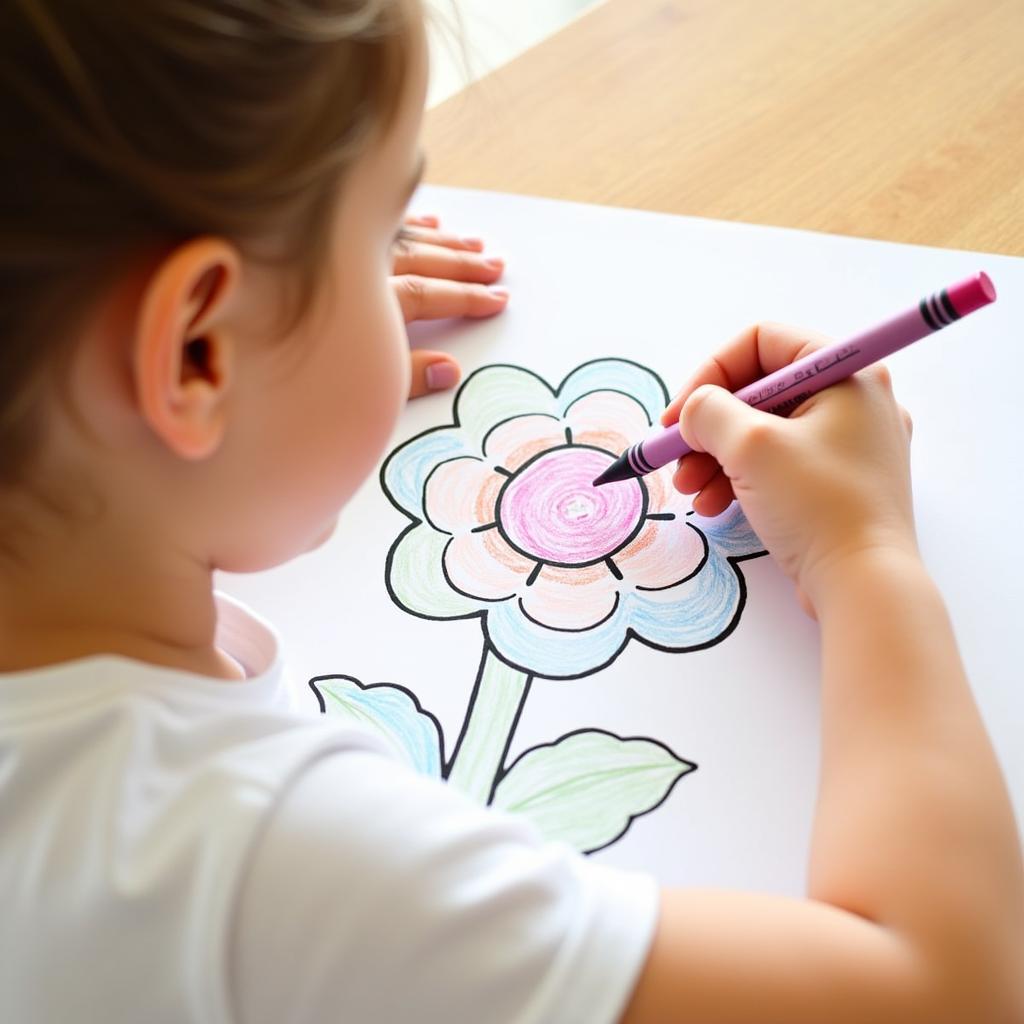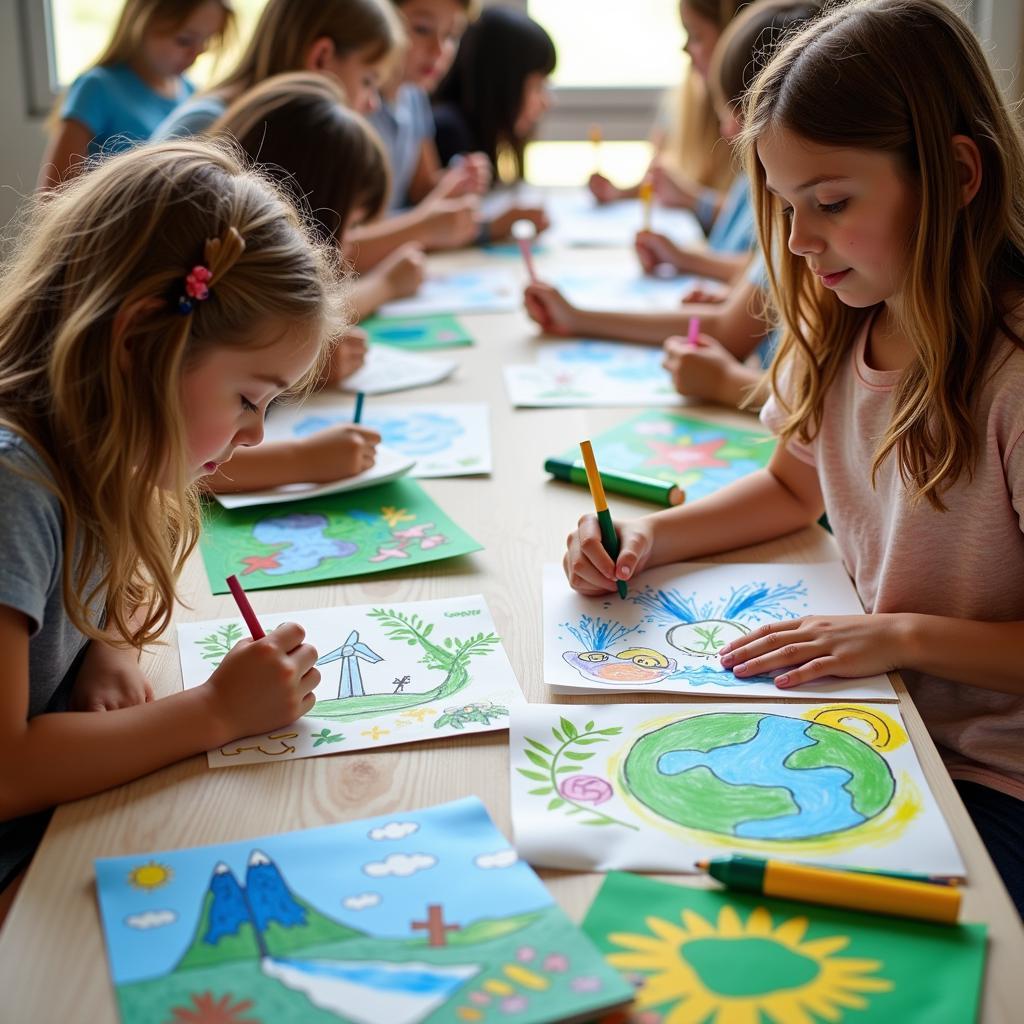For aspiring artists, diving into the world of drawing can feel like learning a new language. From “hatching” and “cross-hatching” to “perspective” and “composition,” understanding basic drawing terminology in English is key to unlocking your artistic potential and effectively communicating your creative vision. This comprehensive guide will equip you with the essential vocabulary to confidently navigate the world of drawing.
Essential Drawing Terms for Beginners
Let’s start with the foundational terms that every budding artist should know:
- Line: The most fundamental element in drawing, a line is a mark made by a pointed tool across a surface. Lines can vary in thickness, length, and direction to create different effects.
- Shape: A two-dimensional enclosed area defined by lines or outlines. Common shapes include circles, squares, triangles, and organic forms.
- Form: While a shape is two-dimensional, form refers to the illusion of three dimensions on a flat surface. Techniques like shading and perspective help create form.
- Value: Refers to the lightness or darkness of a color. Understanding value is crucial for creating depth and volume in your drawings.
- Texture: The surface quality of an object, whether rough, smooth, bumpy, etc. Artists use various techniques, such as stippling and scumbling, to depict texture.
Techniques to Enhance Your Drawings
Once you grasp the basic terms, explore these techniques to add depth and detail:
- Hatching: Creating value and shading by drawing closely spaced parallel lines.
- Cross-hatching: Similar to hatching, but lines are layered in different directions to create darker values and richer textures.
- Stippling: Using small dots to build up value and texture.
- Blending: Smoothing out transitions between values to create a softer, more gradual effect.
Composition and Perspective: Bringing Your Drawings to Life
Understanding composition and perspective is vital for creating dynamic and realistic drawings:
- Composition: The arrangement of elements within your artwork to create a visually pleasing and balanced image.
- Rule of Thirds: A compositional guideline that suggests dividing your image into nine equal parts using two horizontal and two vertical lines. Placing key elements along these lines or at their intersections creates a more dynamic composition.
- Perspective: Creating the illusion of depth and space on a two-dimensional surface. One-point, two-point, and three-point perspective are common techniques.
Expanding Your Artistic Vocabulary
As you progress in your artistic journey, familiarize yourself with these additional terms:
- Gesture Drawing: Capturing the essence of a subject’s movement and pose through quick, loose lines.
- Contour Drawing: Drawing the outline of a subject without shading or internal details.
- Foreshortening: Distorting an object’s dimensions to create the illusion of depth when it is angled towards or away from the viewer.
Mastering these basic drawing terms in English will not only enhance your understanding of drawing principles but also enable you to communicate effectively with fellow artists and explore English-language resources.
Conclusion
Learning the language of art is an ongoing process, but by starting with these fundamental drawing terms, you’ll be well on your way to expressing your creativity with confidence. Remember, practice is key! So grab your sketchbook, pick up your pencil, and let your artistic journey begin!
Need help getting started with your drawing journey? Contact “Lớp Học Vẽ” today!
Số Điện Thoại: 02933878955
Email: lophocve@gmail.com
Địa chỉ: QCRW+366, Vị Tân, Vị Thanh, Hậu Giang, Việt Nam.


